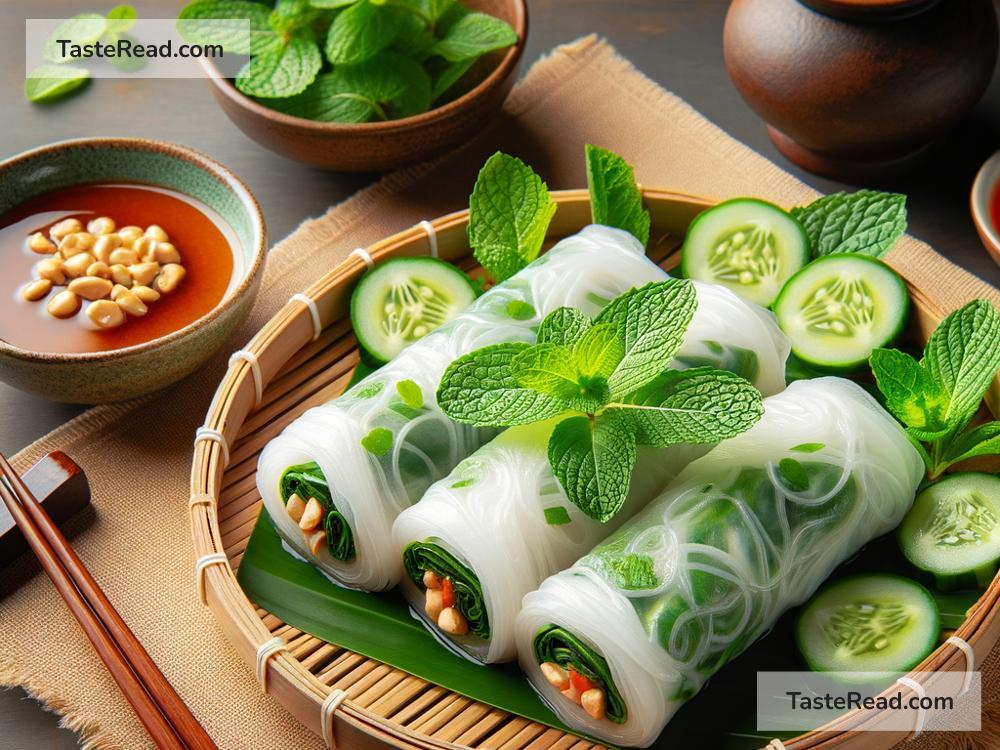Title: The Journey of Vietnamese Goi Cuon to Global Popularity
In the world of snacks, few can rival the freshness, flavor, and sheer delight that the Vietnamese Goi Cuon brings to the table. Also known as Vietnamese spring rolls, these rolls have made a grand journey from the streets of Vietnam to become a global favorite, relished by food enthusiasts across continents. But what is it about Goi Cuon that’s captured the hearts (and stomachs) of so many? Let’s unwrap the story of this delicious snack and find out how it sailed across borders to earn its spot in the global culinary scene.
At its core, Goi Cuon is a testament to the beauty of simplicity and freshness. A delicate rice paper wrapper encases a colorful filling of vermicelli noodles, fresh herbs like basil and cilantro, crispy vegetables, and usually shrimp or pork. Sometimes, tofu is used as a substitute for a vegetarian version. Each roll is a bite-sized burst of flavors and textures, served usually with a side of hoisin-based dipping sauce or a zesty fish sauce blended with lime juice, garlic, and chili peppers.
The origins of Goi Cuon are deeply rooted in Vietnamese culture. Traditionally, these rolls are a celebration of fresh produce and the availability of herbs and vegetables, embodying the importance of balance and harmony in food — a core concept in Vietnamese cuisine. It’s this emphasis on freshness and flavor that first made Goi Cuon a local favorite, especially during the hot summer months when the cool, refreshing nature of the roll provides a much-needed respite.
However, Goi Cuon’s journey from a local delight to an international sensation is as much about globalization as it is about taste. As Vietnamese communities established themselves in other countries, particularly after the Vietnam War, they brought with them their culinary traditions. Restaurants serving Vietnamese food began to pop up in places like the United States, Australia, and various European countries, introducing locals to the wonders of Vietnamese cuisine, including the humble Goi Cuon.
Social media and the rise of foodie culture also played pivotal roles in Goi Cuon’s international acclaim. With platforms like Instagram and Facebook, people now had the means to showcase the exotic and visually appealing dishes they encountered. Goi Cuon, with its transparent wrapper revealing the colorful ingredients inside, was perfectly suited for this new visual era of food appreciation. Consequently, it wasn’t long before it became a trendy dish, featured on menus of not just Vietnamese restaurants but also in fusion and health-centric eateries around the globe.
Another factor contributing to the snack’s popularity is its adaptability. Goi Cuon is incredibly versatile — it can be filled with a variety of ingredients catering to different tastes and dietary preferences. This adaptability makes it a hit among diverse groups of people. Whether one is looking for a light and healthy snack, a unique appetizer, or a way to enjoy different flavor profiles in one bite, Goi Cuon delivers.
Moreover, the increasing global focus on healthy eating has further propelled Goi Cuon into the limelight. As a snack packed with fresh vegetables, lean protein, and minimal use of oil, it fits perfectly into the narrative of modern healthy diets. It’s a fulfilling snack without the guilt, aligning well with the dietary choices of health-conscious individuals worldwide.
As Goi Cuon continues to charm food lovers around the globe, it also serves as a bridge connecting cultures. It’s a vivid example of how food can transcend geographical and cultural boundaries, bringing people together in shared enjoyment. The snack’s popularity underscores the growing appreciation and demand for authentic, multicultural food experiences in today’s global village.
In conclusion, the rise of Vietnamese Goi Cuon from a local favorite to a popular international snack is a tale of globalization, cultural exchange, and the universal love for fresh, flavorful food. It symbolizes how traditional recipes can find a place in the hearts and tables of people far from where they originated, given they strike the right balance of taste, health, and visual appeal. So, the next time you bite into a delicious Goi Cuon, remember, you’re not just enjoying a snack; you’re savoring a piece of culinary history that’s traveled thousands of miles to be on your plate.


